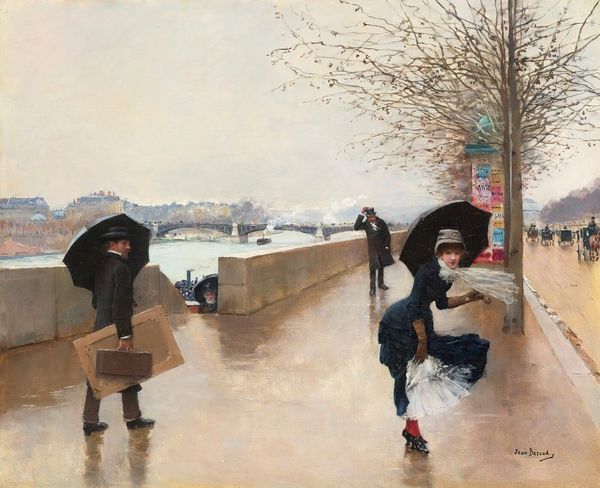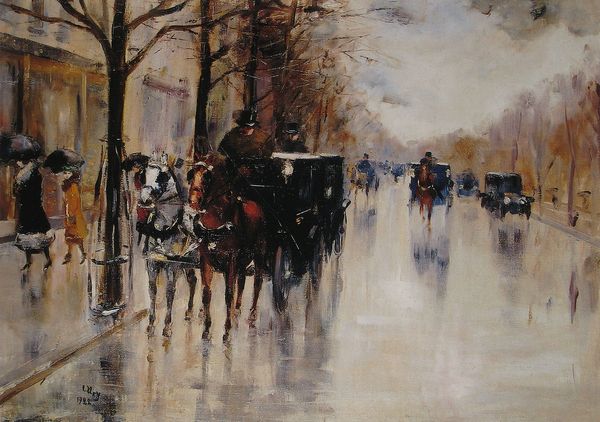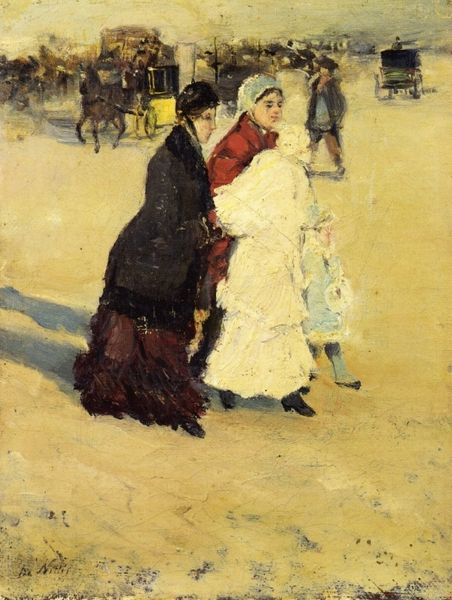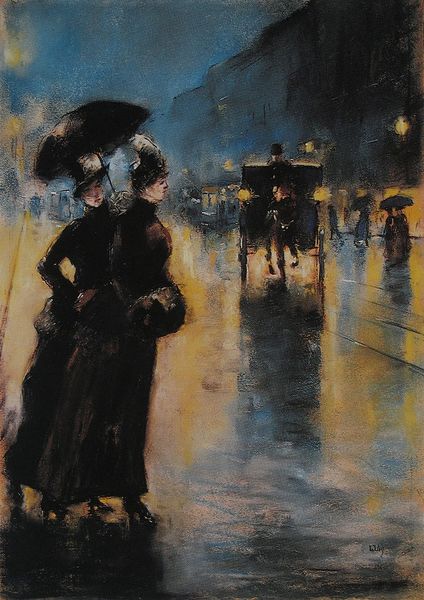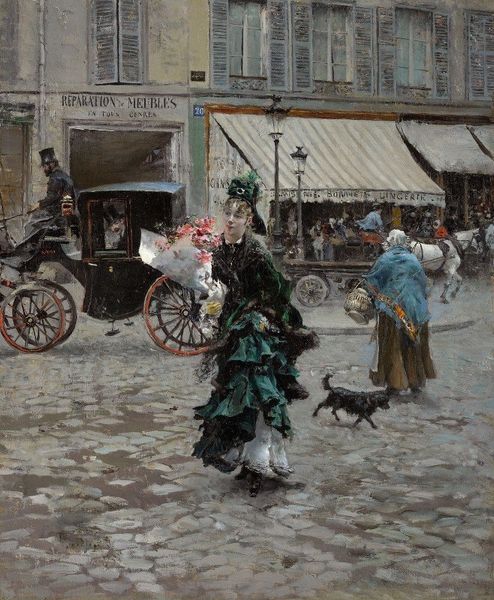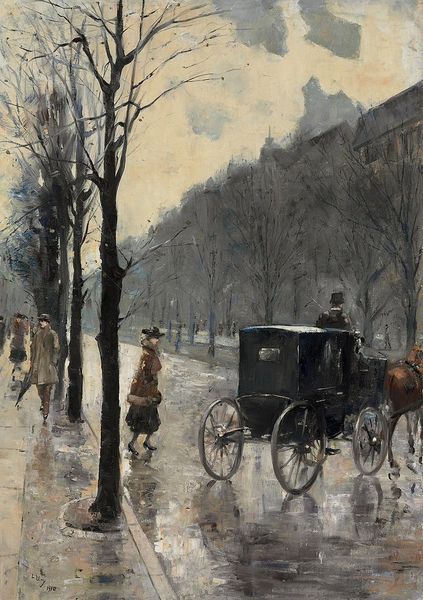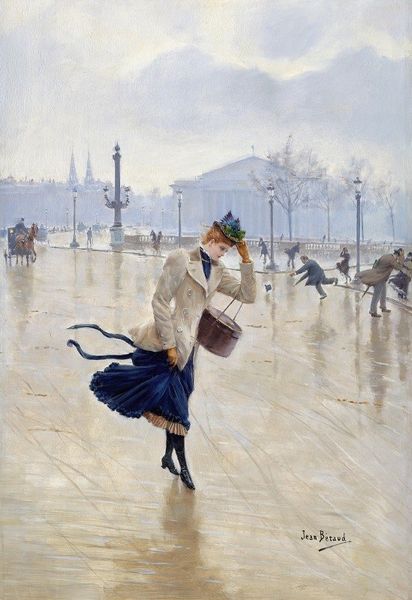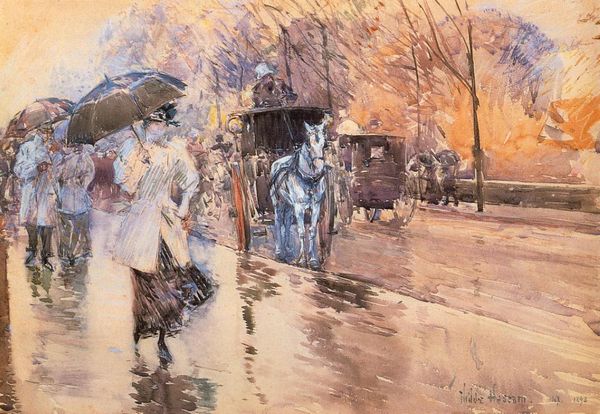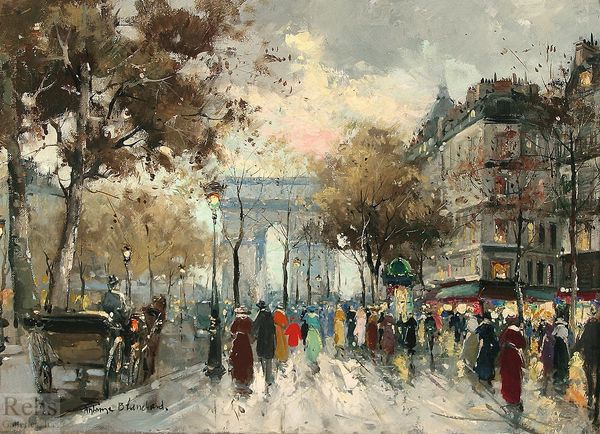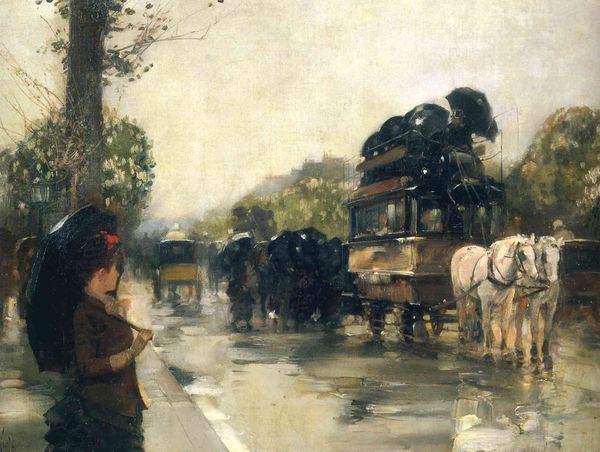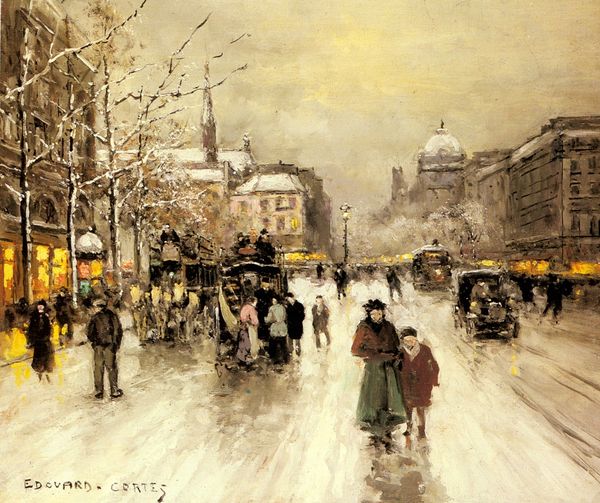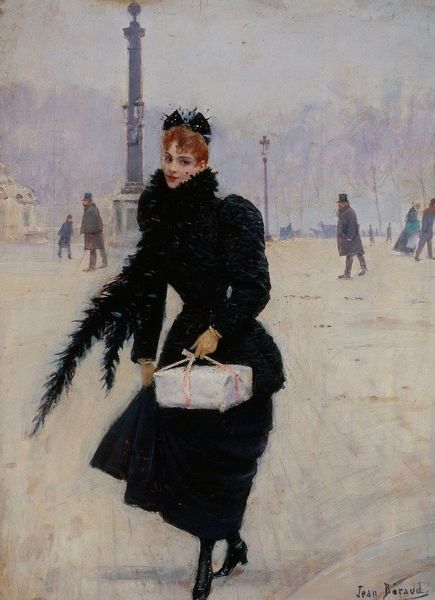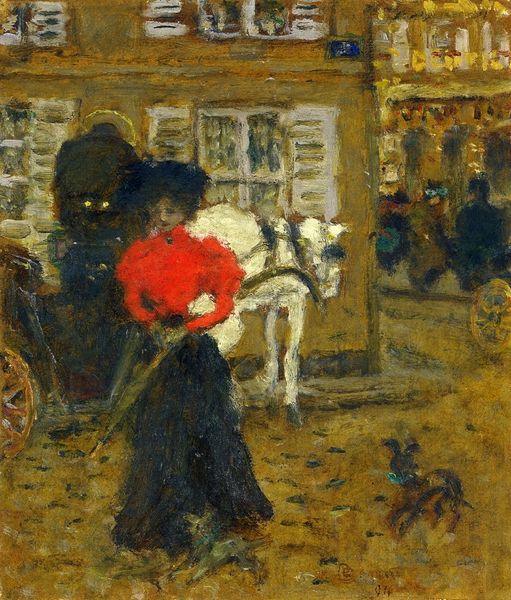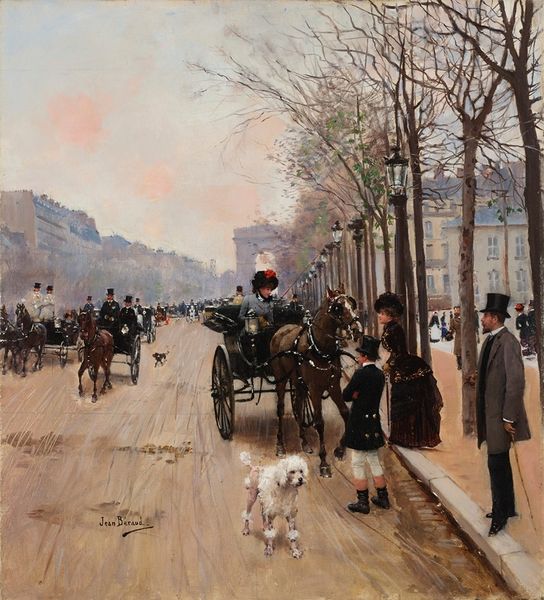
Copyright: Public domain
Curator: Looking at this captivating oil painting, “Mother with Child at a Street Crossing," painted in 1920 by Lesser Ury, what strikes you first? Editor: A pervasive sense of isolation. Despite the city scene, it's almost melancholic. The rain seems to wash away any connection. The colors are so muted. Except, interestingly, for the bright orange of the child’s clothes. That really draws your eye. Curator: It's interesting you mention that contrast. The figures, embedded in a cityscape, represent Ury’s fascination with modern urban life—but Ury himself struggled as an outsider, even facing discrimination by the Berlin Secession art group. Editor: Oh, wow. It really does seep in, doesn't it? The brushstrokes, blurry and hurried, create an image almost out of focus. As if reality itself is just a fleeting impression. The child almost seems to be glowing and out of place. I wonder if it has something to do with him thinking back to a cherished moment during difficult circumstances. Almost a longing to hold onto purity amid it all. Curator: That's a powerful interpretation! Ury explored modern anxieties; he offers critical commentary of Germany’s transformation while reflecting themes of alienation. Editor: True, and the mother, draped in furs, still manages to seem vulnerable. Her eyes fixed ahead. Does she know where she's going? Even the little dog trots along looking pretty uncertain. There’s so much unsteadiness in it all. Curator: That visual instability may indeed echo the wider societal tensions. Remember, this piece emerges from the interwar period. A time of great uncertainty and political upheaval throughout Europe. It would make sense that an artist living through that historical moment would convey similar anxieties on canvas. Editor: So true. So when I look at it again, it also embodies a kind of resilience, a very quiet kind. Because even on this rain-streaked street, this woman still persists, child in arm, moving forward despite the odds. The red maybe also suggesting a sign of resistance and revolt. It’s a hopeful dash of defiance. Curator: An important consideration. This offers another entry point into the interpretation of the work. Editor: Thank you for sharing your historical and contextual expertise! It deepened my personal reaction significantly. Curator: Indeed. Art gains meaning from both our personal interpretations and an awareness of historical narratives. A valuable reminder.
Comments
No comments
Be the first to comment and join the conversation on the ultimate creative platform.
